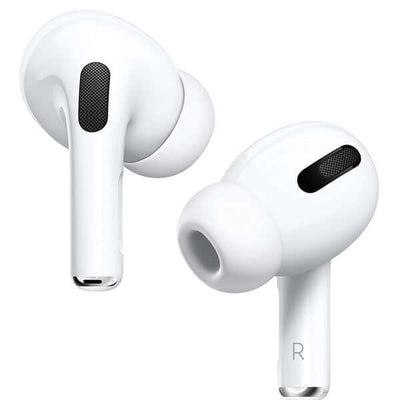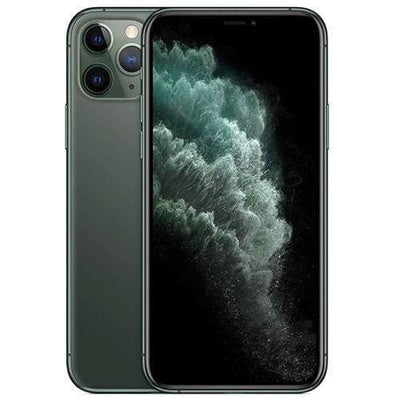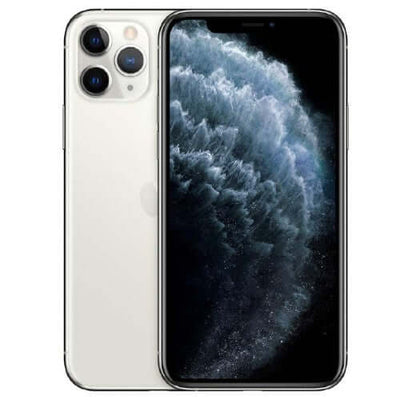Introduction
In a world dominated by rapid technological advancement, millions of electronic devices become outdated every year. This constant cycle of upgrades leads to a growing problem—electronic waste, or e-waste. However, buying refurbished phones is one of the smartest and most sustainable choices consumers can make today. Not only does it help reduce environmental harm, but it also offers affordable access to modern technology. This blog explores how buying refurbished phones contributes to reducing global e-waste, the environmental benefits of refurbishing, and why the refurbished smartphone market is becoming an essential pillar in the circular economy.
Understanding Electronic Waste and Its Global Impact
E-waste refers to discarded electrical and electronic devices—everything from smartphones and laptops to televisions and tablets. According to the Global E-waste Monitor, the world generates over 50 million tonnes of e-waste annually, and this number continues to rise. Shockingly, less than 20% of this waste is properly recycled.
Most e-waste ends up in landfills or informal recycling centers, where toxic materials like lead, mercury, cadmium, and arsenic leach into the soil and water, harming both human health and ecosystems. Smartphones are among the fastest-growing contributors to e-waste because consumers replace them frequently, often every 18–24 months.
Buying refurbished phones directly helps slow this cycle by extending the lifespan of existing devices, ensuring fewer phones are discarded prematurely, and preventing unnecessary accumulation of electronic waste worldwide.
What Does “Refurbished” Really Mean?
A refurbished phone is a pre-owned device that has been tested, repaired, cleaned, and restored to full working condition before being resold. Unlike used phones sold as-is, refurbished models undergo a quality inspection process to ensure performance reliability. Many are certified by professional refurbishers and even come with warranty coverage, giving buyers peace of mind.
Refurbished phones often include:
-
Replacement of defective parts (like batteries, screens, or buttons)
-
Factory resetting and software updates
-
Hardware testing and quality control checks
-
Packaging and re-selling at a lower price
When you choose to buy a refurbished smartphone, you’re not only saving money but also supporting sustainable consumption by giving electronics a second life.
How Refurbished Phones Help Reduce E-Waste
Every refurbished phone represents one less device heading to a landfill. Extending a smartphone’s life by just one or two years can significantly reduce its environmental footprint.
Here’s how the refurbished phone market helps the planet:
-
Minimizes manufacturing waste – Producing a new smartphone requires the extraction of raw materials like gold, copper, cobalt, and lithium. By refurbishing, manufacturers use existing components instead of mining new resources.
-
Reduces carbon emissions – Manufacturing a single smartphone emits about 55–95 kg of CO₂. Reusing phones avoids this production-based pollution.
-
Encourages responsible recycling – Refurbishers safely handle defective parts, ensuring that components are reused or recycled responsibly.
-
Promotes circular economy – Refurbishing keeps devices in circulation longer, reducing demand for new production and minimizing waste output.
In essence, buying refurbished phones is a direct contribution to combating global e-waste accumulation and promoting resource efficiency.
Economic Advantages of Refurbished Phones
Refurbished phones aren’t just good for the planet—they’re also good for your wallet. On average, refurbished smartphones cost 30–70% less than new models. For instance, a refurbished flagship like the iPhone 13 Pro or Samsung Galaxy S22 can offer top-tier performance at nearly half the price.
Other economic benefits include:
-
Warranty protection (usually 6–12 months) from certified sellers
-
Upgradable software support for years after purchase
-
Availability of spare parts for easy maintenance
-
Lower risk compared to buying used phones from private sellers
Consumers in emerging economies benefit most, gaining access to high-quality technology without the premium cost. By choosing refurbished phones, users contribute to both financial savings and environmental sustainability.
The Role of Refurbished Phones in the Circular Economy
The circular economy aims to minimize waste by keeping products, materials, and resources in use for as long as possible. The refurbished phone industry fits perfectly into this model.
Instead of disposing of functional devices, refurbishers reclaim, repair, and redistribute them. This practice not only saves resources but also creates green jobs in repair, testing, logistics, and recycling sectors.
Major tech companies like Apple, Samsung, and Xiaomi have embraced refurbishment programs, offering certified pre-owned devices directly to consumers. This not only reduces their environmental footprint but also strengthens brand trust and customer loyalty.
The growing refurbished phone market is proof that sustainability and profitability can go hand in hand.
Environmental Benefits: Beyond Just E-Waste Reduction
While reducing electronic waste is the most visible benefit, the environmental advantages of buying refurbished phones go deeper:
-
Less mining and deforestation – Reduces demand for raw minerals used in phone components.
-
Lower water pollution – Limits the toxic runoff from e-waste dumpsites.
-
Energy conservation – Manufacturing a new phone consumes immense energy; refurbishing uses only a fraction of it.
-
Reduced landfill pressure – Each refurbished phone prevents hundreds of grams of metals and plastics from polluting the soil.
Collectively, these effects help slow global warming, conserve resources, and build a cleaner future.
Common Myths About Refurbished Phones
Despite the benefits, some consumers still hesitate to buy refurbished phones due to misconceptions. Let’s debunk a few:
-
Myth: Refurbished phones are unreliable.
Fact: Certified refurbished phones are tested rigorously and often come with warranties. -
Myth: Refurbished means “old.”
Fact: Many refurbished phones are less than a year old, returned due to minor defects or upgrades. -
Myth: Refurbished phones are unsafe.
Fact: Reputable refurbishers ensure factory resets and data erasure before reselling. -
Myth: Refurbished phones lack parts or support.
Fact: Spare parts and software updates are widely available for most models.
These myths often discourage eco-conscious decisions. In truth, refurbished devices perform reliably for years when sourced responsibly.
Challenges in the Refurbished Phone Market
Despite the promise, several challenges remain:
-
Consumer trust – Buyers need assurance about quality and warranty.
-
Standardization – Different refurbishers use varying grading systems, which can confuse consumers.
-
Illegal e-waste trade – Some used devices are exported without proper testing, contributing to unsafe recycling practices in developing countries.
-
Awareness – Many users still prefer brand-new devices without realizing refurbished ones can perform similarly.
Addressing these issues requires stricter certification, transparent grading systems, and stronger awareness campaigns promoting refurbished products as both eco-friendly and economically smart.
How Consumers Can Make a Difference
Every small choice counts. Here’s how you can help reduce e-waste accumulation through refurbished technology:
-
Buy from certified refurbishers who offer warranties and transparent testing.
-
Extend your phone’s lifespan with protective cases, battery replacements, and repairs.
-
Sell or trade-in your old phones instead of throwing them away.
-
Recycle responsibly at authorized e-waste collection centers.
-
Encourage others to consider refurbished options and sustainable gadgets.
When millions of consumers adopt these practices, the combined impact on reducing global electronic waste is enormous.
The Future of Refurbished Phones and Sustainability
The future of refurbished technology looks bright. As environmental awareness grows, governments and corporations are investing in e-waste management and green technology initiatives.
In the coming years, we can expect:
-
Stronger regulations on electronic recycling and refurbishment.
-
More manufacturer-backed programs offering certified pre-owned phones.
-
Higher consumer confidence in sustainable products.
-
Integration of AI and automation in refurbishment processes to ensure faster, more efficient repairs.
Ultimately, refurbished phones represent a bridge between affordability, sustainability, and innovation—ensuring a cleaner, greener digital future.
Conclusion
Buying refurbished phones is more than just an economic choice—it’s an environmental responsibility. Each refurbished device reduces the burden of electronic waste, saves valuable resources, and supports a sustainable future. As consumers, embracing refurbished technology helps break the cycle of overproduction and waste while making modern smartphones accessible to everyone. By prioritizing reuse over replacement, we contribute to cleaner ecosystems and responsible consumption. The next time you upgrade your device, consider going refurbished—you’ll not only save money but also take a meaningful step toward protecting the planet from e-waste accumulation worldwide.
FAQs
Q.1. How does buying refurbished phones help the environment?
It extends the device’s lifespan, reduces demand for new production, and prevents discarded electronics from adding to global e-waste.
Q.2. Are refurbished phones reliable?
Yes. Certified refurbished phones are professionally tested, repaired, and come with warranty protection.
Q.3. Do refurbished phones perform like new ones?
Most refurbished phones perform almost the same as new devices, especially those graded “A” or “Like New.”
Q.4. How much can I save by buying refurbished?
You can save between 30%–70% compared to the price of a new phone, depending on brand and model.
Q.5. Where should I buy refurbished phones?
Always purchase from certified refurbishers or trusted online platforms that offer warranties and quality assurance.






















